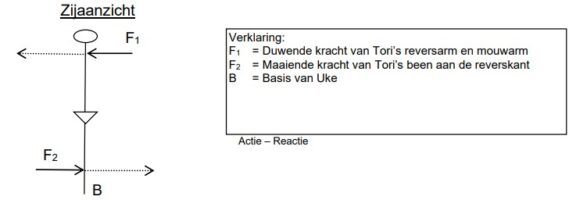Ō-uchi-gari 大内刈
Major Inner Reap
Classification: Ashi-waza (leg technique)
Japanese meaning:
-
Ō = major
-
Uchi = inner
-
Gari = reap
Technical Description
Ō-uchi-gari is a classic leg technique in judo and part of the original 40 throws of the Kodokan (Gokyo no Waza). It involves reaping your opponent’s leg from the inside to throw them backwards.
To execute the technique effectively:
-
Break your opponent’s balance (kuzushi) toward their rear-left corner (uke’s left).
-
This opens their stance and shifts their weight onto the left heel, exposing their support leg.
-
Step deep with your right leg between uke’s legs.
-
Then reap their left leg from the inside in a wide sweeping motion, pulling them off balance with both arms.
-
The throw is completed by pulling uke backward and reaping their base out from underneath them.

Biomechanics of Ō-uchi-gari
This technique operates as a couple (torque-based throw):
-
The sweeping leg (F3) and pulling arms (Re) apply force in opposite directions.
-
Tori drives uke’s upper body backward (Re), while simultaneously reaping uke’s left leg with the inside of their own right leg (F3).
-
The removal of the support leg causes uke to rotate backward around their center of gravity.
This is a prime example of action–reaction judo: uke resists a forward motion, so tori redirects that resistance into a backward throw.

Did You Know?
Legendary Dutch judoka Anton Geesink (Olympic Champion, 10th dan) used to refer to the idea of a “play arm and play leg”. He taught that subtle movements or attacks with one arm or leg could provoke a reaction from your opponent — a principle known as kuzushi by intention.
Ō-uchi-gari is a perfect application of this concept. For example:
-
By threatening with an inner reap, uke may instinctively step back or shift balance.
-
This reaction opens the door for tori to connect into another technique, like Ippon Seoi-nage, Ko-uchi-gari, or even Uchi-mata.
This throw remains a staple in both traditional kata and modern competition due to its adaptability and strong tactical value.